Bioimpedance beyond oedema assessment
Maree O’Connor, Physiotherapist interviews Adam Brown, Vice President Global Sales for ImpediMed and Exercise Scientist
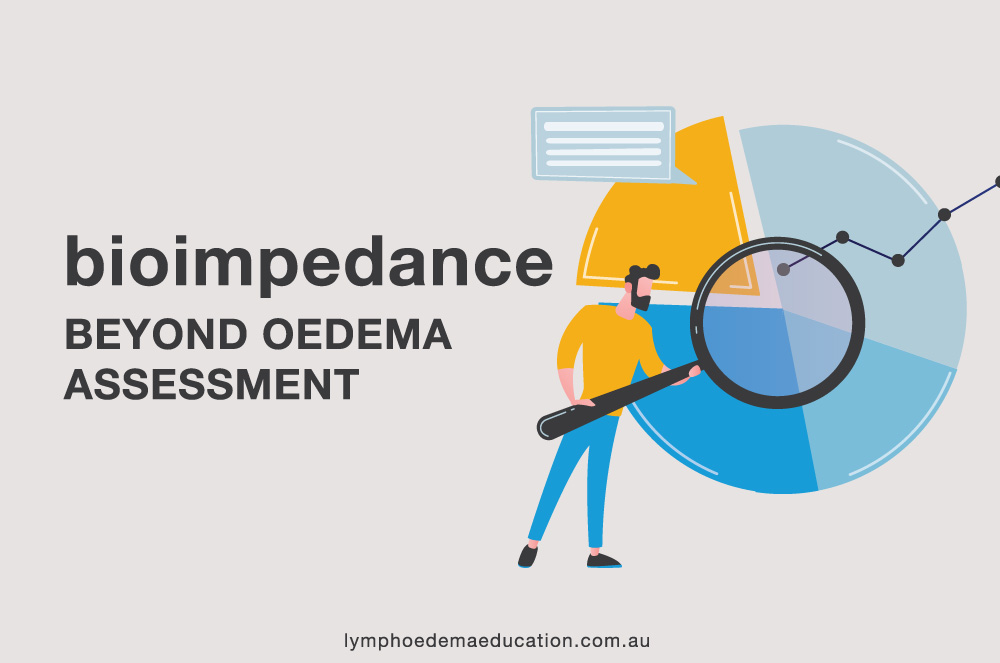
In the world of lymphoedema bioimpedance spectroscopy is well known as an objective measuring tool to measure extracellular fluid. This is across the spectrum from surveillance to early intervention to the more severe forms of chronic oedema. But its more than just a tool to measure the L-Dex.
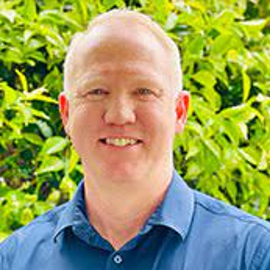
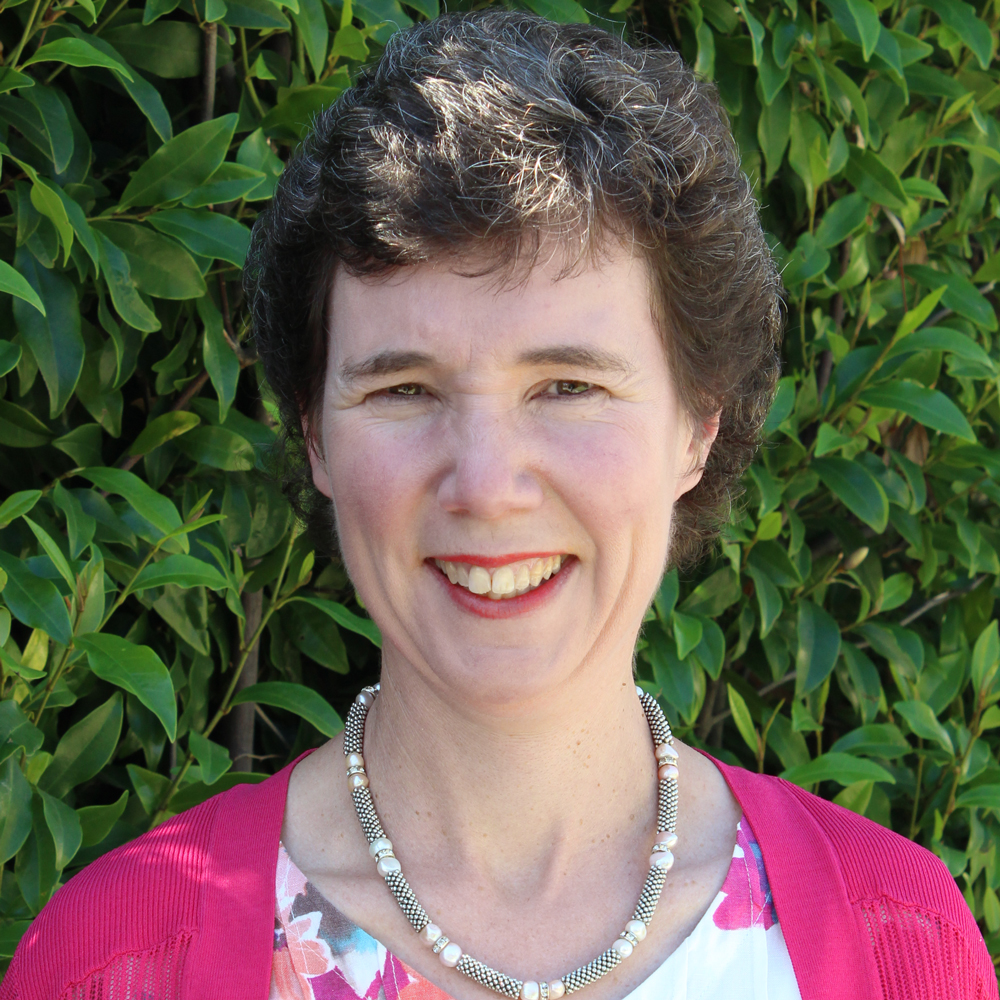
Maree O’Connor, Physiotherapist sat down with Adam Brown, who is an exercise scientist and also the Vice President Global Sales for ImpediMed, to discuss this further.
Maree: Lymphoedema practitioners now have the opportunity to look beyond the L-Dex to inform their management planning with their clients. It’s important to look at the whole person rather than just the at risk or swollen limb(s). This can sometimes be overwhelming for therapists. Adam what are the key measurements that clients should look at?
Adam: Let me tell you about this.
The 6 most important SOZO measurements include:
- Total body water (TBW),
- Intracellular fluid (ICF),
- Extracellular fluid (ECF),
- Skeletal muscle mass (SMM),
- Fat Mass (FM) and
- Phase angle.
Fluid outputs including, TBW, ICF and ECF provide a comprehensive insight into how much fluid our body holds and where it sits in relation to the cell.
SMM and FM outputs help us better understand where improvements can be made with tissue. It’s important to understand types of tissue present as SMM is the healthy tissue we want to maintain for better quality of life. Phase angle is a measurement used to determine overall cellular health.
To learn watch the following video.
Maree: If you look at my clients TBW. extracellular (ECF) and intracellular fluid (ICF) readings what do you see?


Adam: The intracellular (ICF) and extracellular (ECF) fluid percentages will always equal 100% of the total body water (TBW). As one shifts right, the other will shift left.
In a healthy patient, we may expect to see the TBW sit to the right of the mean with an ICF/ECF positive ratio. In other words, we hope to see more ICF than ECF. This client’s numbers reflect a TBW that sits on the desired side of the mean, with a positive ICF/ECF ratio.
We can also look at fluid status in relation to the various standard deviations (SD) displayed here. This client is sitting at or close to 1 SD from the mean in a positive direction.
Maree: The extracellular fluid is below the mean but the L-Dex is 32.2. How do you explain this?
Adam: L Dex compares the fluid in a limb at-risk for lymphedema to a healthy limb in order to help detect Lymphoedema. L-Dex is a measurement of ECF. It’s possible to have an ECF measurement below average for your population and a raised L-Dex score as we are looking at specific limb. L-Dex detects changes in fluid as low as 2.4 tbsp, which may not be represented when looking at whole body ECF.
Maree: How does the Hy-Dex effect the other measurements?

Adam: Hy-Dex can be a good indicator of hydration, but remember it is important to keep in mind this output is dependent on age, gender, and weight. As we gather trends over time, we want to see comparable or improved Hy-Dex numbers to gauge consistent fluid status. Varying Hy-Dex scores are associated with fluctuating TBW measurements and can also alter the ICF/ECF ratios.
Maree: If you consider the skeletal muscle mass (SMM) and the fat Mass (FM) of my client what would you be telling her?
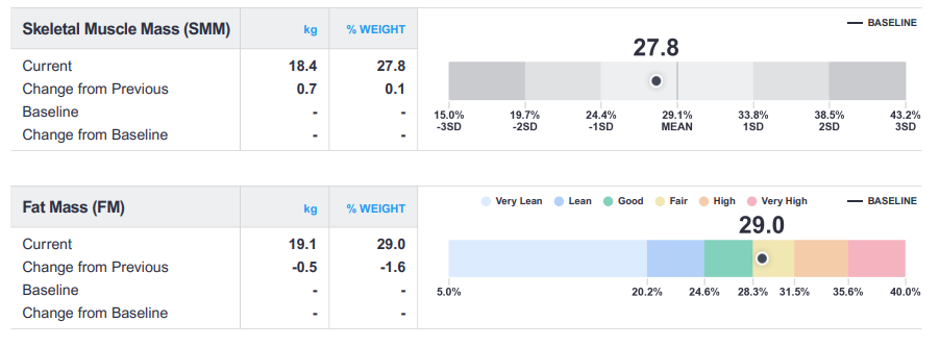
Adam: When looking at tissue outputs we want to keep in mind that SMM is the good stuff we want to hold on to. Higher SMM can benefit a patient’s mobility and strength. We tend to see a decrease in activities of daily living like cooking, cleaning, and walking with a decreased SMM.
This client is sitting at a SMM just below the mean, so I’d first shoot for a goal of reaching the mean or crossing over it to the right at 29.1%.
Fat mass is an output with a much larger range of healthy, and desirable ranges can depend on a number of things including disease state, treatment timeline, and personal preference. Body fat is needed for hormone regulation and insulation, however, body fat that is too high can increase risk for chronic disease.
This client is currently sitting in the fair range for fat mass, and depending on stage of life and preference, could benefit from decreasing fat mass by a few percentage points to bring it into the ‘good’ range. To achieve this, focusing on increasing SMM rather than focusing exclusively on fat mass. As SMM increases and body weight remains the same, most patients can expect to see a decrease in fat mass as these two outputs are strongly related
Maree: If the skeletal muscle mass increases what will happen to the intracellular, extracellular and total body water measurements?
Adam: SMM holds more fluid than Fat Mass. As our tissue outputs improve and SMM increases, we may expect to see an increase in ICF. More specifically, an increase in SMM can positively alter the ICF/ECF ratio to reflect a higher ICF and lower ECF.
Maree: How can you improve the phase angle?

Adam: Phase angle is a fantastic output SOZO provides. Phase angle may be considered a measurement of cellular health and can be influenced by SMM, FM, fluid build-up, hydration, diet and inflammation. To increase phase angle, focus on overall healthy lifestyle choices such as drinking plenty of water, eating several servings of fruits and vegetables every day, and increasing SMM through resistance exercise.
Maree: My client’s segmental measurements are shown below. She has lymphoedema in her right arm following breast cancer management. What do these measurements tell you?
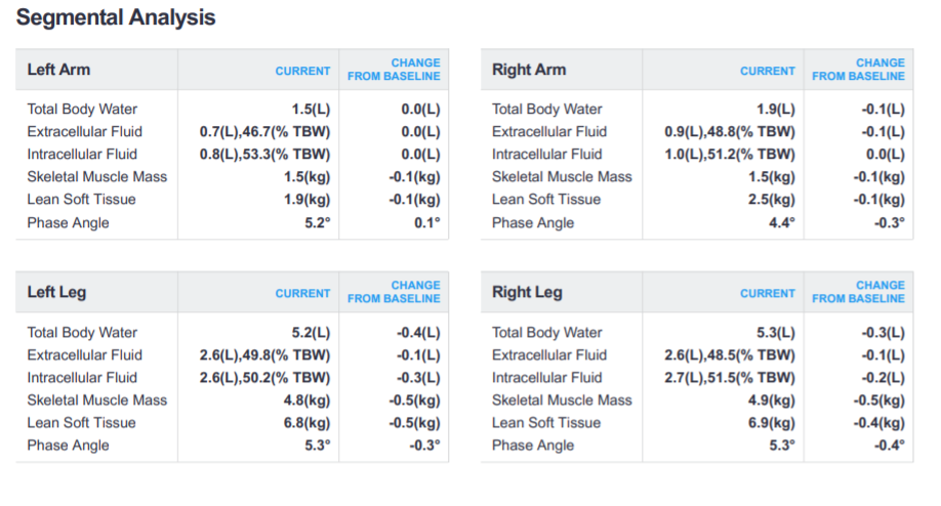
Adam: Although some variations between limbs is normal and can be explained by limb dominance, larger variations can be a sign of an abnormality. We can see fluid build-up in the right arm as compared to the left arm because even a half litre of extra fluid in such a small area of the body is notable. When looking at SMM, we don’t see a difference between right arm and left arm or between right leg and left leg. However, due to fluid build-up in the right arm, we do see a difference in lean soft tissue between the upper limbs.
Maree: Not everyone has access to this technology. If a practitioner can’t purchase a SOZO, but would like their clients to be measured on one, what are their options?
Adam: ImpediMed has a SOZO Locator to find a provider that has a SOZO.
The videos below will also develop your clinical reasoning on using bioimpedance for body composition analysis.
This webinar covers SOZO outputs for lymphoedema and body composition. Understand how to apply SOZO data to daily clinical practice.
Case Review, presented by Brent Collier, Physiotherapist and Director, Peak Health
This presentation covers a Bilateral Lymphoedema Case Review in relation to SOZO outputs, presented by Maree O’Conner, Physiotherapist – Victorian Lymphoedema Practice, Founder Lymphoedema Education Solutions.



